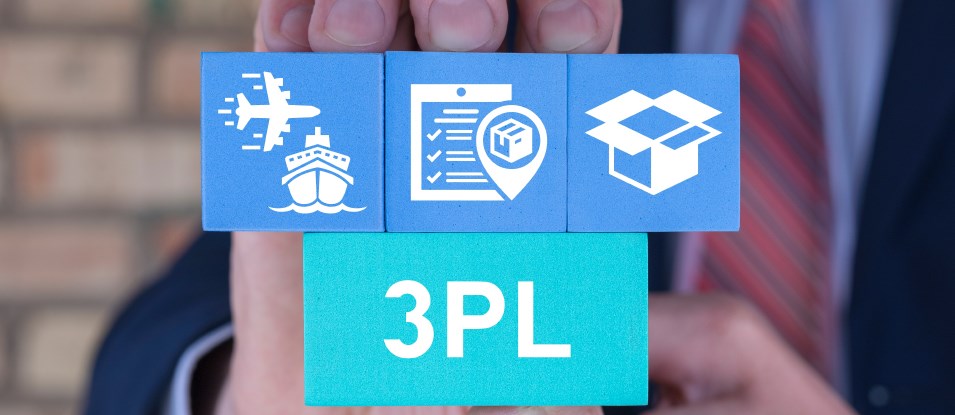The 3PL, or third-party logistics, has become an indispensable tool for businesses. In the rapid, globally interconnected business landscape, efficiency and effectiveness have become paramount to organisational success.
Traditionally, companies single-handedly managed their logistics operations in-house or handled tasks such as transportation, order fulfilment and more. However, as businesses grew, the complexity of juggling all of these simultaneously felt mind-boggling for many. Thereby diverting resources from core competencies and hindering overall growth.
This is where third-party logistics (3PL) providers emerge as valuable allies. They outsource the non-core logistics functions to specialised businesses and significantly streamline operations. Additionally, they reduce costs and improve overall supply chain performance.
Intrigued by these services? Join us as we delve further.
What is third-party logistics?
3PL is essentially outsourcing the management and execution of a company’s logistics operations to an external specialist. This involves delegating tasks related to the storage, transportation, and delivery of goods to a third-party logistics provider. They can assist companies with various tasks, including:
- Warehouse
- Inventory management
- Fulfillment
- Transportation
- Distribution
- Shipping
- Returns
- Kitting
Besides improving customer satisfaction, 3PL also provides tools and infrastructure to automate retail order fulfilment.
Core functions of a third-party logistics
A 3PL provider typically handles a wide range of logistics functions. Here, we have discussed some of them.
1.Warehousing and Inventory Management:
From storing products in their warehouses to managing inventory levels to ensure optimal stock availability.
The 3PL provider handles returns and reverses logistics while implementing inventory control systems for accurate tracking.
2.Transportation and Distribution:
These allies select the most efficient transportation modes (air, sea, road, rail) for your business and coordinate the movement of goods from origin to destination.
Apart from managing carrier relationships and freight rates, they provide real-time shipment tracking and visibility.
3.Order Fulfillment:
Receiving and processing customer orders and carrying out everything to the T, from picking, packing, and shipping products. They even look after managing returns and exchanges.
With holistic services, 3PL partners provide order tracking and customer updates so that you can shed the logistic-related responsibilities off your shoulders.
4.Supply Chain Management:
Third-party logistics analyse and optimise the supply chain while identifying cost-saving opportunities.
By implementing supply chain management software, they improve their visibility and efficiency.
How do they work?
Understanding the functions and operations of 3PL is important. Let’s take an example to make things crystal clear.
An e-commerce cosmetic company may hire a formulator, a packaging designer, a dermatologist and other experts. However, they do not want to handle the consumer ordering and product shipment process. What do they do?
While looking at the core process themselves, they can divert the responsibility of logistics to a fulfilment centre to process the online orders. Meanwhile, they can hire a trucking carrier to haul their freight. This is where the fulfilment centre and carrier act as 3PL partners for the e-commerce business. Although, in this example, the company allies with two providers, it is possible to rope in a single agency to do both tasks.
The growth of 3PL
The professionals from the Council of Supply Chain Management trace back the emergence of 3PL to four decades ago. The term was originally used in the early 1970s to recognise intermodal marketing companies.
Decades later, the Consumer Product Safety Improvement Act of 2008 defined 3PL legally as a company that solely handles logistics. They contribute to the ordinary course of business by receiving, holding or transporting a commodity without taking title to the product.
According to the present data, 90% of Fortune 500 companies use a 3PL. The study shows that the global market is expected to grow to USD 1,993.72 billion by 2028.
Should you invest in a 3PL service?
Although working with a 3PL company can greatly reduce your company’s e-commerce expenses, the decision to invest is a strategic one. It requires careful consideration of your business’s goals and capabilities. Let’s take a look into the factors that can influence this decision:
When to Consider a 3PL
- If your business is experiencing rapid growth, these partners can help manage the increased volume of orders efficiently.
- For businesses with significant seasonal variations in demand, a 3PL can provide the flexibility to scale operations.
- If your supply chain involves multiple locations, then their services can simplify the process.
- Outsourcing logistics allows your business to concentrate on its core competencies and drive growth.
Bottom line
To make an informed decision, consider conducting a SWOT analysis for your logistics operations before handing over responsibilities to a 3PL. It can help identify areas where they can add value and mitigate risks. All said and done, it’s highly imperative to choose a 3rd party logistics provider who understands your business and the supply chain well. Do effective market research and choose the best services.






